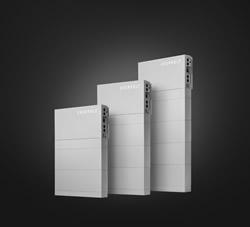From roof-mount to ground-mount to trackers, there is an optimal solar solution for every customer and every site. By adding the option of dual-axis trackers to your product offerings, you can provide the full range of solar solutions and meet the needs of more customers without worrying about a complicated installation process.
What Does a Dual-Axis Solar System Installation Require?
Contributed by | AllEarth Renewables
One of the keys to success when growing a business, in the solar industry or otherwise, is watching for opportunities and new markets. While most solar dealers are already offering roof-mount solar, fixed ground-mount solar, or a combination of the two, you may find that you need to add a new product to your offerings, such as a dual-axis tracker, to differentiate your businessor to meet customer demand.
If you've been focused on fixed solar, moving towards tracking systems might seem intimidating. Luckily, these technologies are generally designed to have a simple, straightforward installation process that can take as little as one day! Read on to find out what a dual-axis solar system requires.
General Considerations for Installing Solar
When starting on any solar project, it's essential to determine the following before beginning installation:
- The kWh necessary to meet the customer’s energy needs
- The rebates and solar incentives that are available
- The permits required
- Whether the customer wants the system connected to the grid
- Additional customer- and site-specific needs and safety considerations
With those basics in place, let’s examine the differences between installing roof-mounted solar systems and dual-axis systems.
Limitations of a Roof-Mounted PV Solar System
The average roof-mounted PV solar system takes about two to three days of installation time, and can be a somewhat complicated process. Given that these systems are integrated into rooftops, there are many parameters that must be determined to properly site the system such as:
- Whether any shading will occur and the estimation of its effect on the system
- The orientation and tilt angle of the roof
- The available area for the solar array
- Whether the roof is suitable for mounting the array
- How the modules will be mounted on the roof
- Where the inverter will be located
- The cabling route and the length of the cable run
Perhaps the most important of these determinations is the orientation and angle of the roof. This factor will decide whether solar energy is even an option for the customer. For optimal solar generation throughout the day, panels must face south within a 20-degree window. Shade also plays a role, as even occasional shading on a single solar panel throughout the day can have a significant negative impact on energy generation. Limiting the pre-installation time and easily addressing most of these parameters is where the benefits of a ground-mount system can really shine.
Ground-Mount Solar System Installation
With a ground-mount system, much of the uncertainty around the sitework is eliminated. Unlike fixed rooftop installations, which require a lot of planning—from determining if the roof can handle the weight of the solar system to calculating the best possible angle—ground-mount systems require much less prior preparation.
One of the benefits of ground-mount solar is that sites are less limited, and can be chosen to optimize performance and minimize site work. The biggest consideration is space: a ground-mount system will need enough open land to fit the system with minimal shading. Once the site is prepped the actual installation can move fairly quickly.
Dual-Axis Tracker System Installation
Dual-axis tracker systems are more advanced versions of traditional ground-mount systems. With a tracker system, the panels are mounted on a racking system with a small motor drive, allowing the panels to move and follow the sun during the day. By following the sun, a solar tracker is more efficient than a standard fixed system and can generate up to 45% more power.
![]()
Some trackers come with an integrated motor drive and gear system that moves the panels a total of 6" every 8 minutes, meaning they are optimized to capture maximum solar power throughout the entire day, from dawn to dusk. This efficiency allows the customer the flexibility to generate more power with the same number of panels as used on a fixed systemand more easily meet their power production targets.
In general, a tracker system is not much more complicated to install than a standard ground-mount system. In addition to open land requirements, each tracker installed will need additional space to move freely, without obstructions. Some manufacturers offer one-pallet designs that include everything needed for a simple installation. Be sure to look for trackers with a streamlined product design to eliminate time spent on site design, allowing you to complete your installations more quickly and efficiently.
From roof-mount to ground-mount to trackers, there is an optimal solar solution for every customer and every site. By adding the option of dual-axis trackers to your product offerings, you can provide the full range of solar solutions and meet the needs of more customers without worrying about a complicated installation process.
The content & opinions in this article are the author’s and do not necessarily represent the views of AltEnergyMag
Comments (0)
This post does not have any comments. Be the first to leave a comment below.
Featured Product

